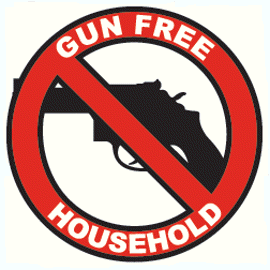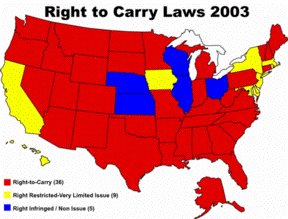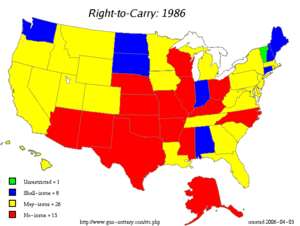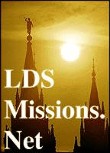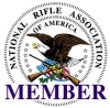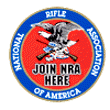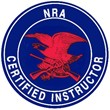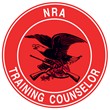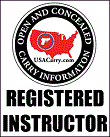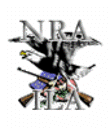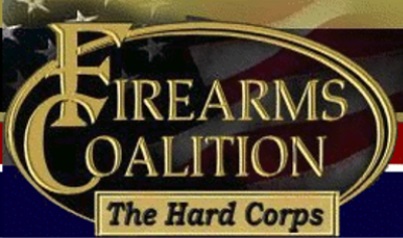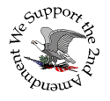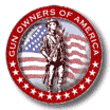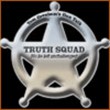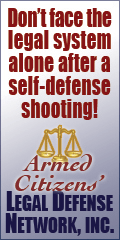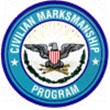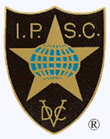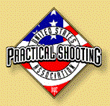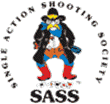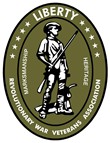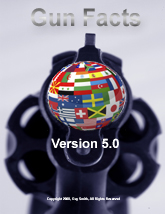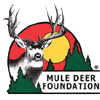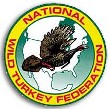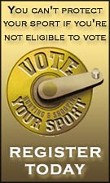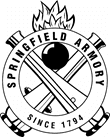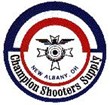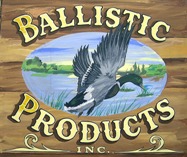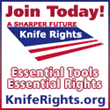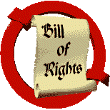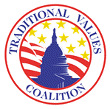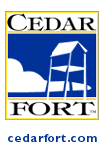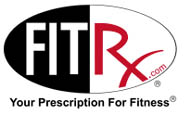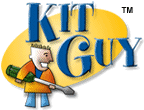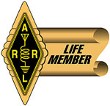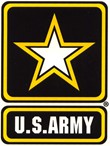I have been a shooter nearly all my life. In fact, my shooting experience began so early in my life that I can't remember when my father first took me shooting. Being a life-long shooter himself as well as an Army MP in post-war Germany, Dad was careful to ensure I learned fun, safe, and effective use of firearms.
I feel an obligation and desire to pass that experience on to others.
Consequently, I have been a certified firearm instructor continuously since 1986.
I do my part to ensure the shooting sports remain safe.
My training as a shooter began with my father and an uncle. That training as a
youth was augmented with the Utah Hunter Education Course and the Boy Scout
Marksmanship Merit Badge. As an adult, I've taken both military and
law-enforcement firearms training. I have been an NRA-certified instructor and
Hunter Education instructor since 1986. I have earned medals in both rifle and
pistol competition. I have taken, and am certified most NRA shooting courses. I
am an NRA Chief Range Safety Officer. Most importantly, I regularly take
advanced training from nationally-ranked trainers to improve my skills as a
shooter and as an instructor.I don't need to teach firearms courses to make money.
Instead, I teach because I believe in, and fight to defend, our right to own and use firearms for defense, fun, sport,
and hunting.
Because teaching firearms safety, for me, is essentially a service to the community and not a
path to wealth, I don't have an established schedule for classes. I teach whenever is agreeable to the students and fits my schedule (see
above). I usually teach the classroom portion in my Cedar City, Utah home to keep costs down for the student and go to the nearby range at Three Peaks to shoot. I will also teach at other locations provided by the students. The city (yup, I had to get a business license) allows me to have up to 6 students per class in my home.
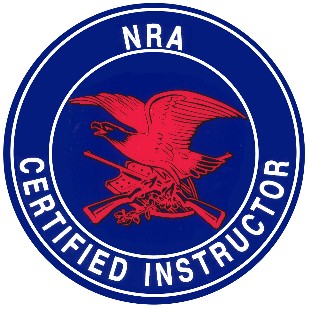 I teach most of the NRA courses: I teach most of the NRA courses:
Eddie Eagle - Free
NRA Home Firearm Safety (4 hours) - Free
NRA First Steps Rifle Orientation
(4 hours) - Free
NRA First Steps Pistol
Orientation (4 hours) - Free
NRA First Steps Shotgun
Orientation (4 hours) - Free
NRA Basic Personal Protection in the Home (8 hours) - $50
NRA Basic CCW
(Utah Concealed Firearm Course) (9 hours) - $50
NRA Basic Rifle (14 hours) - $50
NRA Basic Pistol (8 hours) - $50
NRA Basic Shotgun (10 hours) - $50
NRA Basic Muzzleloading Rifle/Pistol/Shotgun (12 hours) - $50
NRA Basic Metallic Cartridge Reloading (8 hours) - $50
NRA Basic Shotgun Cartridge Reloading (8 hours) - $50
NRA course duration includes range time and may vary depending on student needs. I usually have materials on hand to teach the NRA courses with short notice.
Most NRA courses are $50 per person ($70 per couple) which includes classroom materials. The Home Firearm Safety and Eddie Eagle courses are free.
Individualized training is $20 per hour per person.
It annoys me when a gun dealer sells a small "cute" (or even pink) handgun to
a woman, saying, "This is a lady's gun" when it reality is a difficult and
painful gun for a novice to shoot. I want to prevent that. So, I offer an hour
of free individualized training to first-time gun buyers -- before they buy a
gun. The purpose of this
training is to allow new shooters to try several guns before dropping
hundreds of dollars on a gun they may not like and will never shoot because it
isn't a good fit for that person. All my training requires the following standards for successful completion:
A written test with a passing score,
A Shooting test with satisfactory demonstration of shooting proficiency and
safety awareness,
Attitude -- my sole and personal judgment as to the student's demonstration
of maturity and mental and emotional fitness to possess a firearm.
In my experience, most experienced shooters who come to my classes who have
bad shooting habits are willing to correct those habits -- at least while in my
class. When they leave, they are better shooters because they have cleaned up
those habits.
Most of my students who have problems, however, are those who have never
touched a gun in their lives. These are almost always middle-aged women or
older. While they have come to my training so they can use a gun for
self-defense, they typically are afraid of the gun.
I begin every class with the attitude and assurance that you're going to have
fun and that shooting will become an enjoyable life-long hobby. My classroom is
light-hearted, yet deadly serious about learning safety and gun-handling skills.
I'm hardly a stand-up comedian, but I keep my classroom presentations
light-hearted with a bit of humor.
In the classroom, beginners get to handle real firearms (no live ammo in the
room, of course) including loading magazines (with dummy ammo, of course)
operating slides, cylinders, and triggers, aiming, dry-fire, etc.
When we get to the range, my beginning handgun shooters generally start out
on a .22 (such as the Ruger Mark III) from a bench over sandbags. They don't get off the
sandbags until they have mastered the fundamentals (secrets) of shooting (sight
alignment, sight picture, hold control breath control, trigger control,
follow-through). With a .22 on sandbags, students always seem to pick up those
fundamentals quickly.
When they are comfortable with the .22 we move gradually up the power scale
to guns that are more adequate for self-defense. I back off as soon as they fire
the first shot in a gun they find unpleasant in recoil, size, weight, etc. They
shoot both revolvers and semi-autos from the sandbags (I have over a dozen
handguns for my students to try).
Once we find a centerfire handgun a student likes, they graduate to a
standing position. I have them try isosceles and Weaver stances, then let them
pick whatever position feels most comfortable for them. By this time, even the
most timid beginner is having fun and has good defensive-shooting accuracy. At
that point, we're ready to begin some basic defensive-shooting training. I rarely need
to spend more than a half hour in all that preparatory live-fire training.
One extremely important factor in training a new shooter is gun selection.
When a student signs up for a class, I tell then to not buy a gun until after
the class, that we'll talk about gun selection in the class, and that they'll
get to try several different guns to find what they like best. It really bothers
me when a 70-year-old woman brings a Ruger LCP or a S&W Airweight to her first
shooting experience. She usually has that gun because "It's cute," her son
recommended it, or (worst of all) a gun store clerk recommended it. Small guns
are experts' guns -- not guns for new shooters -- no matter how cute the gun is.
Grandma doesn't get to shoot her "cute" gun until she has mastered shooting with
a full-sized gun. If her first shot is with an LCP or an Airweight, it'll also
be her last. She'll refuse to take a second shot.
Naturally, I cannot and will not teach anyone who is "restricted" (felons,
persons with a misdemeanor domestic-violence conviction, persons who have been
adjudicated mentally incompetent, drug/alcohol addicts, or minors without
written parental permission) so don't ask. If you are currently restricted from
possessing a firearm and have learned to behave yourself, I suggest you go to
Criminal Record Expungement and Sealing and
Expungement Links for assistance in clearing up your criminal record.
 The Utah Hunter Education Course is mandatory for hunters born after 1965. Utah has two ways of completing Utah Hunter Education. The most common is the traditional classroom method. This is what I am certified to teach. The state also offers an Internet version where most of the classroom material is covered online without a live instructor. On completing the online portion, you go to the range with a certified instructor. Again, I'm not certified to conduct the shooting for the Internet version. The traditional course takes about 12-15 hours. The course is organized in six lessons which include wildlife identification and survival as well as firearms safety and use. I usually teach the course in 4 evening sessions of 3 to 3-1/2 hours (Tuesday, Wednesday, Thursday and Friday and up to three hours at the range on Saturday). I like to get started at 6:30 PM. The shooting on Saturday will be scheduled for a time that is convenient for everyone. I can usually bunch the lessons into two days if desired. I usually need as much as a couple of weeks notice to get training materials from the state for this training. On the first night of class, you will need to bring a
Utah "Hunter Education Registration Certificate" ($10 from a dealer that sells hunting and fishing licenses). There is no other charge except the cost of your ammunition. When you satisfactorily complete the training, I sign
your "Hunter Education Registration Certificate" and it becomes a small-game hunting license. The shooting portion is done with a 22-caliber rifle. I have some rifles students can borrow if you don't have your own. There is no age restriction, but I find that children under age 10 have a hard time passing. I require children under 12 to have a parent, guardian or other adult relative present during all training. Parents are always welcome and encouraged to join older children as well. Even teens seem to feel more comfortable in the class if a parent is with them. The Utah Hunter Education Course is mandatory for hunters born after 1965. Utah has two ways of completing Utah Hunter Education. The most common is the traditional classroom method. This is what I am certified to teach. The state also offers an Internet version where most of the classroom material is covered online without a live instructor. On completing the online portion, you go to the range with a certified instructor. Again, I'm not certified to conduct the shooting for the Internet version. The traditional course takes about 12-15 hours. The course is organized in six lessons which include wildlife identification and survival as well as firearms safety and use. I usually teach the course in 4 evening sessions of 3 to 3-1/2 hours (Tuesday, Wednesday, Thursday and Friday and up to three hours at the range on Saturday). I like to get started at 6:30 PM. The shooting on Saturday will be scheduled for a time that is convenient for everyone. I can usually bunch the lessons into two days if desired. I usually need as much as a couple of weeks notice to get training materials from the state for this training. On the first night of class, you will need to bring a
Utah "Hunter Education Registration Certificate" ($10 from a dealer that sells hunting and fishing licenses). There is no other charge except the cost of your ammunition. When you satisfactorily complete the training, I sign
your "Hunter Education Registration Certificate" and it becomes a small-game hunting license. The shooting portion is done with a 22-caliber rifle. I have some rifles students can borrow if you don't have your own. There is no age restriction, but I find that children under age 10 have a hard time passing. I require children under 12 to have a parent, guardian or other adult relative present during all training. Parents are always welcome and encouraged to join older children as well. Even teens seem to feel more comfortable in the class if a parent is with them.
 The Utah Concealed Firearms Permit Utah is considered
one of the most desirable CCW permits in the nation. It is recognized in
over 30 states
(varies with the political winds in other States), does not require listing of any specific weapons, is valid for 5 years, has a low initial and renewal fee, and is available to all
responsible adults in the US. The concealed firearm permit is not for those who are willing to shoot to kill, and to shoot first and ask questions later. The permit is not a license to
shoot or kill anyone and does not, in any way, alter the permit holder's responsibility to obey the same lethal-force laws applicable to non-permit-holders. It merely restores the constitutional right to carry the most effective tool to fight for one's life if necessary.
I combine the Utah Concealed Firearms course requirements with the NRA Personal Protection course. Classroom time is about 6-7 hours depending on the student's experience and questions. Range time varies -- we shoot until the students demonstrate good safety practices and proficiency -- typically 1-2 hours. If we do the classroom portion and the range portion in one day, you can plan on about
8 hours total. My state-approved syllabus includes shooting both a semi-auto and a revolver.
Feel free to preview my
slides. If you have your own, that's what I'd like you to shoot so that you will be comfortable with your own gun. If you don't have one or the other type of handgun, you can use mine. I have both revolvers and semi-autos that you can use for the training or just to try out. You'll
typically shoot 20-100 rounds depending on experience. If you are a public school employee, see my section on guns in school. Although they are ineligible for the Utah Concealed Firearm Permit, this course is also suitable for teens with parental permission
-- no charge. I charge $50 per person or $70 per couple. If a spouse
(or other family members) doesn't want or need the certification, she/he is still welcome to attend for free. You'll also pay a $39
($49 for non-Utah residents) application fee to the state. I discount my fee to $20 per person for
Utah school employees (K-college), college students (age 21 minimum), Armed Citizens' Legal Defense Network members, and
military veterans. The Utah Concealed Firearms Permit Utah is considered
one of the most desirable CCW permits in the nation. It is recognized in
over 30 states
(varies with the political winds in other States), does not require listing of any specific weapons, is valid for 5 years, has a low initial and renewal fee, and is available to all
responsible adults in the US. The concealed firearm permit is not for those who are willing to shoot to kill, and to shoot first and ask questions later. The permit is not a license to
shoot or kill anyone and does not, in any way, alter the permit holder's responsibility to obey the same lethal-force laws applicable to non-permit-holders. It merely restores the constitutional right to carry the most effective tool to fight for one's life if necessary.
I combine the Utah Concealed Firearms course requirements with the NRA Personal Protection course. Classroom time is about 6-7 hours depending on the student's experience and questions. Range time varies -- we shoot until the students demonstrate good safety practices and proficiency -- typically 1-2 hours. If we do the classroom portion and the range portion in one day, you can plan on about
8 hours total. My state-approved syllabus includes shooting both a semi-auto and a revolver.
Feel free to preview my
slides. If you have your own, that's what I'd like you to shoot so that you will be comfortable with your own gun. If you don't have one or the other type of handgun, you can use mine. I have both revolvers and semi-autos that you can use for the training or just to try out. You'll
typically shoot 20-100 rounds depending on experience. If you are a public school employee, see my section on guns in school. Although they are ineligible for the Utah Concealed Firearm Permit, this course is also suitable for teens with parental permission
-- no charge. I charge $50 per person or $70 per couple. If a spouse
(or other family members) doesn't want or need the certification, she/he is still welcome to attend for free. You'll also pay a $39
($49 for non-Utah residents) application fee to the state. I discount my fee to $20 per person for
Utah school employees (K-college), college students (age 21 minimum), Armed Citizens' Legal Defense Network members, and
military veterans.
   Boy Scout Rifle Shooting, Shotgun Shooting, and Archery Merit Badges. I will work with Troops or with individual Scouts as needed. Course duration varies with the needs of the Scout(s) but plan on times similar to those listed above for comparable NRA courses. Boy Scout training is free unless the Scout is seeking other certification such as the Utah Hunter Education Course when appropriate fees are charged. Boy Scout Rifle Shooting, Shotgun Shooting, and Archery Merit Badges. I will work with Troops or with individual Scouts as needed. Course duration varies with the needs of the Scout(s) but plan on times similar to those listed above for comparable NRA courses. Boy Scout training is free unless the Scout is seeking other certification such as the Utah Hunter Education Course when appropriate fees are charged.
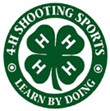 I help out a bit with local
4-H Shooting Sports activities. If you want more information on 4-H shooting opportunities, please contact me or the Iron County Extension Office. or, you can go to the website of the 4-H Shooting club with which I work. I help out a bit with local
4-H Shooting Sports activities. If you want more information on 4-H shooting opportunities, please contact me or the Iron County Extension Office. or, you can go to the website of the 4-H Shooting club with which I work.
Anyone attending any of my classes is welcome to bring a family member or two to audit the course at no cost provided the class size does not exceed 6 total attendees. This will give those family members some very useful safety and awareness information and maybe even have some fun. Parents of minor students are especially encouraged to attend. If the family members attending the same class want the course certification, I will give them a $30 discount, but no course materials. Even anti-gun family members are welcome with the understanding that I'm here to provide safety training -- not to debate the merits of gun rights. (For my side of the gun debate, go to my Hoplophile website.)
 Do you want to be an instructor? As an NRA Training Counselor, I am able to certify new NRA instructors in the following disciplines: Do you want to be an instructor? As an NRA Training Counselor, I am able to certify new NRA instructors in the following disciplines:
NRA Basic Instructor Training (6 hours - see paragraph below) - $75
*
NRA Home Firearm Safety Instructor Certification (5 hours) - $60
NRA Personal Protection In the Home Instructor Certification (9 hours) - $110
NRA CCW Instructor Certification (11 hours) - $130
NRA Pistol Instructor Certification (11 hours) - $130
NRA Rifle Instructor Certification (14 hours) - $160
NRA Shotgun Instructor Certification (11 hours) - $130
NRA Muzzleloading Rifle/Pistol/Shotgun Instructor Certification (18 hours) - $150
NRA Metallic Cartridge Reloading Instructor Certification (9 hours) - $110
NRA Shotshell Reloading Instructor Certification (9 hours) - $110
NRA Range Safety Officer Certification (9 hours) - $110
* NRA policy requires you to take NRA Basic Instructor Training if you have not taken it in the past 2 weeks no matter how many times you've taken it in the past.
Minimum class size for instructor training is 4 instructor candidates.
To calculate the cost of your training, add the cost of each discipline-specific course you need plus the cost of Basic Instructor Training. Likewise, to calculate the time needed for your training, add the time needed for each discipline-specific course you need plus the time needed for Basic Instructor Training. Because many of the courses have overlapping content, the fees given above are maximums. Once you decide what you want to do, I'll let you know what the total financial and time investment would be.
The above fees include the NRA instructor application fee. I'll file the application for you. I give a $30 discount off the total to registered 4-H or BSA adult leaders who are also NRA members. (NRA
membership is highly recommended, but not required to be an NRA instructor. If
you are an NRA member, your membership number will also be your instructor
number. If you aren't currently an NRA member, you can sign up
here with a $10 discount.) I give the training to registered 4-H or BSA youth leaders (ages 13 through 17) for the cost of the application fee only.
On completion of this training, new instructors ages 13-17 may receive NRA Apprentice Instructor Status. New instructors ages 18-20 may receive NRA Assistant Instructor Status. New instructors ages 21 or older may receive full NRA Certified Instructor Status.
Call (435) 590-7569 or (435) 867-5976 for more information or to schedule your training. Or, you can send me an
email by clicking here.
Recommended books & magazines on shooting.
Return to Top
|
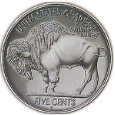


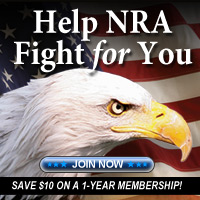








 I help out a bit with local
I help out a bit with local
 Do you want to be an instructor?
Do you want to be an instructor? 





